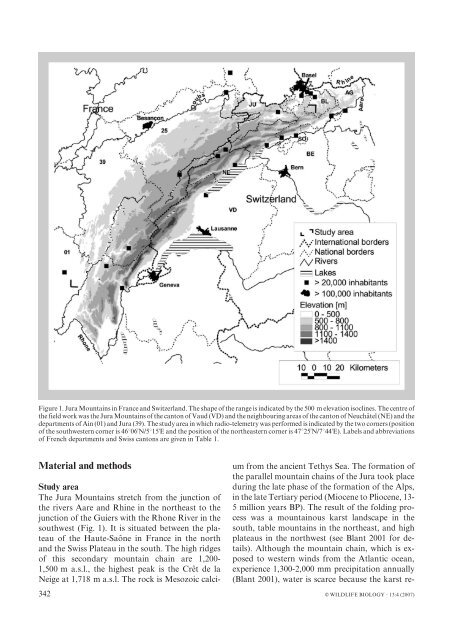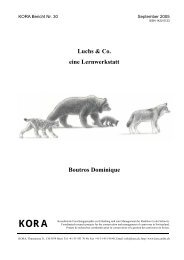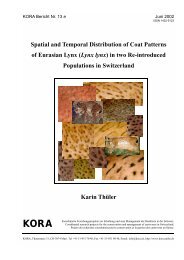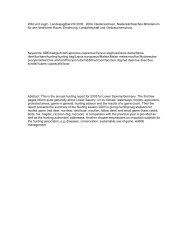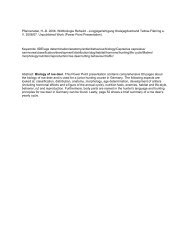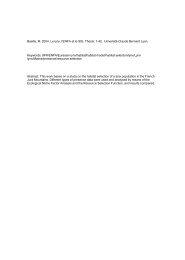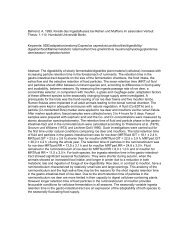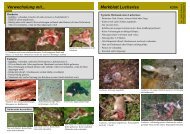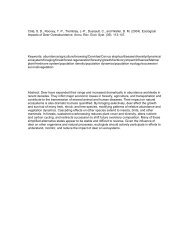Breitenmoser, U., Breitenmoser-Würsten, Ch., Capt, S ... - Kora
Breitenmoser, U., Breitenmoser-Würsten, Ch., Capt, S ... - Kora
Breitenmoser, U., Breitenmoser-Würsten, Ch., Capt, S ... - Kora
Create successful ePaper yourself
Turn your PDF publications into a flip-book with our unique Google optimized e-Paper software.
Figure 1. Jura Mountains in France and Switzerland. The shape of the range is indicated by the 500 m elevation isoclines. The centre of<br />
the field work was the Jura Mountains of the canton of Vaud (VD) and the neighbouring areas of the canton of Neuchâtel (NE) and the<br />
departments of Ain (01) and Jura (39). The study area in which radio-telemetry was performed is indicated by the two corners (position<br />
of the southwestern corner is 46u06'N/5u15'E and the position of the northeastern corner is 47u25'N/7u44'E). Labels and abbreviations<br />
of French departments and Swiss cantons are given in Table 1.<br />
Material and methods<br />
Study area<br />
The Jura Mountains stretch from the junction of<br />
the rivers Aare and Rhine in the northeast to the<br />
junction of the Guiers with the Rhone River in the<br />
southwest (Fig. 1). It is situated between the plateau<br />
of the Haute-Saône in France in the north<br />
and the Swiss Plateau in the south. The high ridges<br />
of this secondary mountain chain are 1,200-<br />
1,500 m a.s.l., the highest peak is the Crêt dela<br />
Neige at 1,718 m a.s.l. The rock is Mesozoic calcium<br />
from the ancient Tethys Sea. The formation of<br />
the parallel mountain chains of the Jura took place<br />
during the late phase of the formation of the Alps,<br />
in the late Tertiary period (Miocene to Pliocene, 13-<br />
5 million years BP). The result of the folding process<br />
was a mountainous karst landscape in the<br />
south, table mountains in the northeast, and high<br />
plateaus in the northwest (see Blant 2001 for details).<br />
Although the mountain chain, which is exposed<br />
to western winds from the Atlantic ocean,<br />
experience 1,300-2,000 mm precipitation annually<br />
(Blant 2001), water is scarce because the karst re-<br />
342 E WILDLIFE BIOLOGY ? 13:4 (2007)


